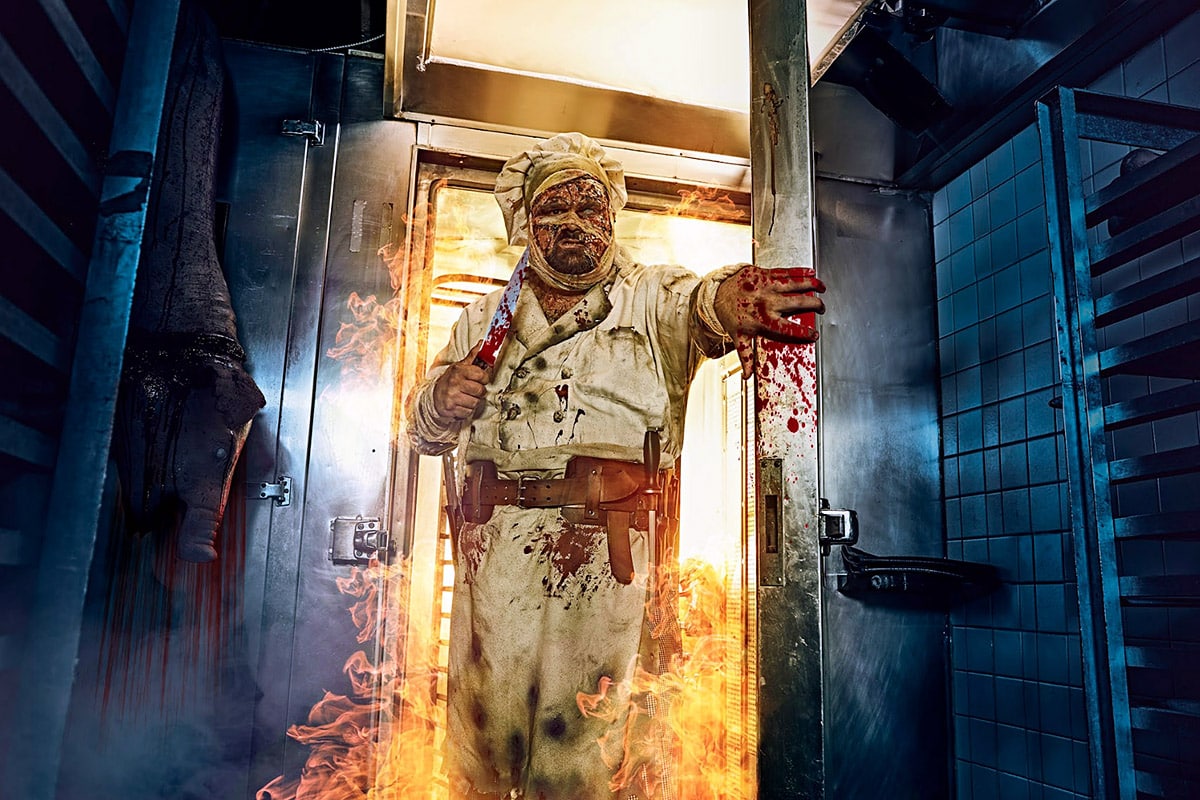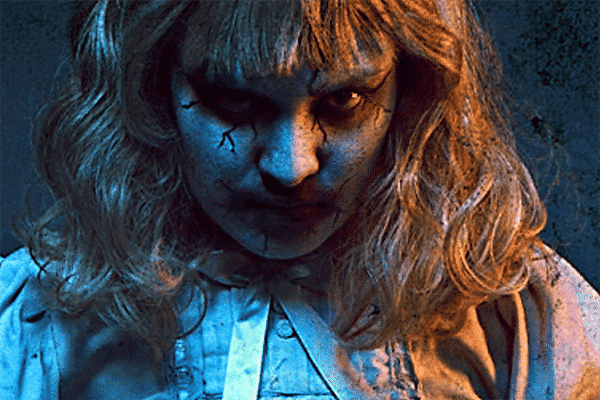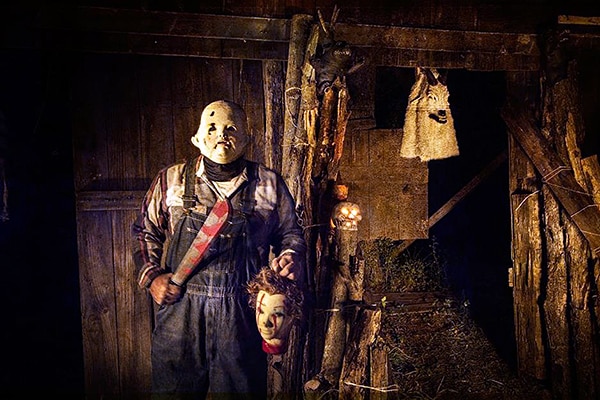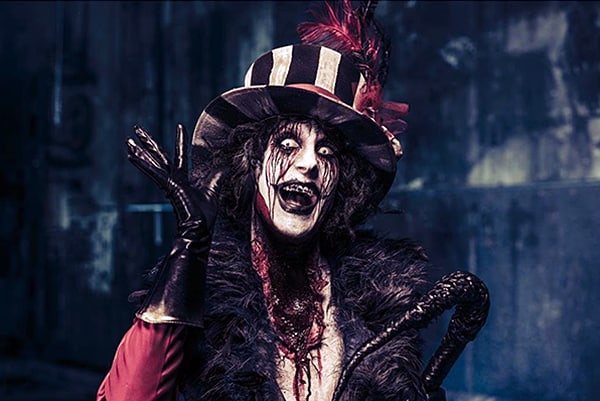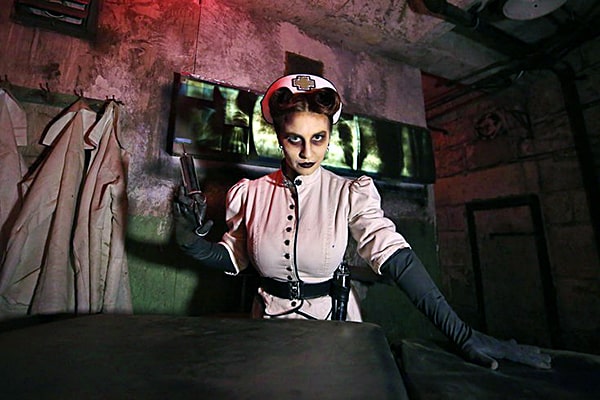Jonathan’s Research Reveals the Good News About Why It’s a Great Time to Be a Haunter.
Hello. It’s Jonathan and Crystal. Welcome to our blog based on Episode 175 of our Haunt Weekly podcast, which is dedicated to the haunted attraction and haunt entertainment industry. Whether you’re an actor, owner, or just plain aficionado, we aim to be a podcast for you.
This blog is longer than usual because of all the research I put into this particular podcast. In the previous week’s episode, we talked about why the haunt industry is in trouble and, the following week, we did a counterpart episode on why things are looking great for the haunt industry. This is ostensibly a happier topic, but I could never have guessed it would be as difficult as it was to find the information I wanted.
“It was easier to find the depressing news,” said Crystal.
It really was, and that might be the most worrisome thing of all. I really thought this was going to be a breeze, but it was far from it. The previous episode had me nervous, because I felt people didn’t want to hear a full episode about the danger signs and the challenges the industry faces. Turns out, I was wrong. The response was overwhelming. One listener, Liz Cannon, suggested we write an article about it, and I’m going to do that sometime soon.
Anyway, that was probably one of the most popular episodes we’ve had in recent history, and the feedback has been wholly positive. I don’t think we got a single negative comment, which blows my mind. It received roughly 10% more downloads than most episodes. So, thank you all for being awesome. We love this industry, and we love this community, but sometimes that means we have to be realistic, and that’s what that episode was about.
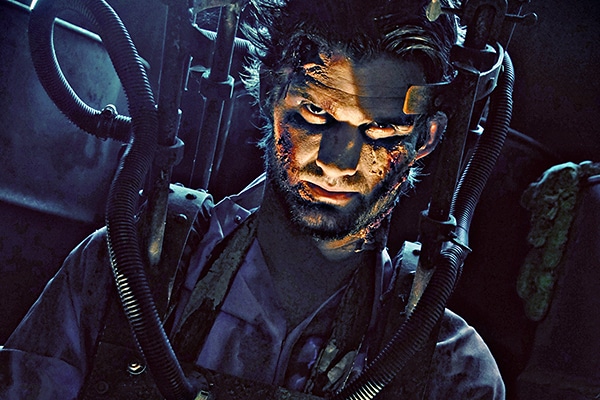
“Hopefully, we’ll be able to continue that conversation, because it’s difficult but necessary,” said Crystal.
In this business, we need to keep in mind the size of the industry, the demographics, and how things are shifting to see how we’re going to fit in as a niche experience in this changing world. Honestly, I think we’ll do just fine, because we’re a very adaptive industry. One of the advantages of being smaller is you’re more adaptive and can pivot more quickly.
In that previous episode, we came up with about eight reasons why the haunt industry is in trouble, and now we’re going to do about the same number of reasons why the industry looks really good. Like I said, the research on this took way longer than I anticipated. If anything was going to turn me from an optimist into a pessimist about the haunted attraction industry, it was the difficulty in pulling together this episode. It really blew my mind, because it’s so difficult to get hard numbers. Even though we have some information because we talk to people at the Haunted Attraction Association, getting numbers we could cite was difficult. Anyway, long story short, that, more than anything, depressed me a little bit. That being said, there’s still a lot of reasons to be very optimistic about the haunted attraction industry and a lot of things to look forward to.
The International Expansion of Haunted Houses
We’ll begin with a reason for optimism that may not impact individual haunts, in the United States in particular, but may bode well for the industry at large—the international expansion of haunts and haunting. According to Haunt World, the industry has been making great inroads internationally. There are about 100 countries that currently host haunted attractions or haunted houses. Basically, the consensus on the number of countries on the planet ranges from about 192 to 202, so it’s right around 200. Roughly half of the countries have haunted attractions. The expansion has become very, very rapid. We recently saw the very first haunts open in the Middle East—in Saudi Arabia and Qatar. Our personal experience is, every time we go somewhere that’s a tourist town of any regard—not a major tourist attraction but like Edinburgh, say—they have a haunted attraction. Sometimes they have multiple haunted attractions that are heavily advertised. Most international haunts are year-round events, too, which is a great benefit. It seems like it’s only in the US where haunted attractions are tethered so tightly with Halloween and the autumn season—that 60-day, two-month time period in September and October. Other countries don’t have that. They have spooky things year-round. They also put haunts in places where they wouldn’t be very sustainable here in the US, such as shopping malls. The one that opened in Qatar is in a major shopping mall.
“When Kyle went to Japan, there were tons of haunted attractions that were open year-round,” added Crystal. “That’s backed up by Margee Kerr’s book, Scream, where she talks about visiting some of those places.”
There’s great opportunity for international expansion, because this seems like something tourists are seeking out and doing. How many London Dungeons did we see advertised when we were in the UK?
“There were a few,” replied Crystal.
There was the London Dungeon, the Edinburgh Dungeon, and it seemed like every town that had more than five people and a goat had a Dungeon attraction. One of the weirdest stories we had in our history of going to haunted houses was the Budapest one. We were in Budapest, and we really weren’t looking for a haunted attraction, but we heard about one.
“And then we were told it was closed.”
We were told it didn’t exist, or that it was closed, and we were like, “OK, whatever. We’re going to get drunk on cheap Belgian beer. We’re going to do that thing we’ve been doing the whole trip.” Anyway, on our last day, we find it—these huge underground caves. It wasn’t a manned haunted attraction, the best we could tell.
“Right, except by other customers,” said Crystal.
Who, apparently, can scare the shit out of you just as effectively. And, often, accidentally. When you collide with someone in the dark, that turns out to be really effective—not safe, but effective. And then we got lost. We barely made it out before they locked us in overnight.
So, anyway, we found a haunted attraction in Budapest that was different than what we’ve seen elsewhere, but it was no doubt a haunted attraction by any definition.
“There was also the haunted attraction at Hogwarts Castle,” offered Crystal.
Yes, in Alnwick. It’s spelled Alnwick, but it’s pronounced Awnick by the locals, like the “l” just kind of disappears. It’s England. But yeah, they actually had one in their dungeon there that was theatrical as fuck. The only way to describe it is that 16 people can go to it in a day because of the limited amount of space, but we managed to score free tickets. Alnwick Castle, AKA Hogwarts, is where they filmed the outside scenes for the first couple of Harry Potters before it went full CG. Try to hunt down someone to talk to about the haunted attraction they have there, the dungeon experience, if they still have it. So, the international growth has been amazing.
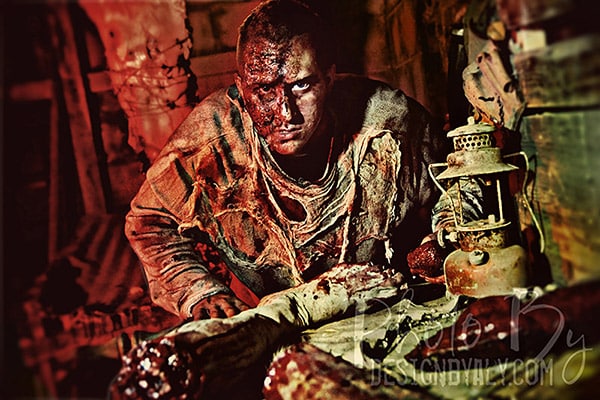
Haunts Are a Growing Promotional Medium
The second point is that haunts are a growing promotional medium. Again, this may not impact your haunt, especially if you’re established, but this is really good news for the industry as a whole. Basically, we’re seeing haunts used in non-traditional ways. Some of it has grown in the time we’ve been doing Haunt Weekly. For example, Pink Trap House in Atlanta was used to promote a Two Chains album, and then it became a regular haunted attraction. Same for the Bacardi Haunted House in Brooklyn. Also in Brooklyn, Gorillas did a haunted house that turned out to be not so haunted. It was billed as haunted, but it was more of a recreation of sets from their videos, from the sound of it. Slipknot did a haunted house in Des Moines. So, this is what we’re seeing. We’re seeing these promotional vehicles, these “art experiments,” that are haunted attractions. Mostly we’re seeing them in LA, New York, and highly populated cities like Miami.
Corporate promotions within haunts have been a thing forever. According to Haunt World, this has been used by Coke, Pepsi, every fast-food chain on the planet, and The Truth About Cigarettes, the anti-smoking campaign. The Truth people are funded by the cigarette-company settlements, so we’re talking multi-billions of dollars for marketing. What we’re seeing now is the haunt itself being a promotional vehicle, and this is growing. I think haunts should look at this, because corporate sponsorship of haunts could be a thing. For certain brands, this is a real opportunity and, more often than not, they’re pairing up with established haunters, because the company wants to put on a haunted house but has no experience with that. This could be something for haunts to seek out and potentially make a lot of money at. This is a big boon for another reason—it associates us with these large brands. Remember, we’re a small industry. We only do half a billion in ticket sales.
“Whenever you pair up with larger brands, you get in front of their customers, too,” observed Crystal.
Your brand comes up, and it boosts the whole industry. When people see Two Chains making haunted houses, their fans are going to think more highly of haunted attractions across the board, not just the Pink Trap House.
Haunted Houses Have an Excellent Safety Record
The next item I discovered does affect you—the safety record of haunted houses in the last 35 years. This is one of the reasons the research took me so long. I didn’t want to put my foot in my damn mouth when I make this next statement: I could find no instance of a customer dying in a haunted attraction due to negligence on the part of the haunt since 1984. That was the year of the Haunted Castle fire at Six Flags. I found a number of stories of people dying in haunts due to unknown heart conditions and things like that, but not from negligence. These got a lot of coverage, but it doesn’t actually happen that often. Here are some of the examples I was able to find: In Hong Kong in 2018, a man was killed after entering an off-limits area at a dark ride. He basically got out of a car, went into an area he wasn’t supposed to, a piece of machinery struck him, and he died. In 2016, a teen died in a rural North Carolina haunt after being chased into the road by his friends. It was a very rural road, there just happened to be the one car coming down the road at the wrong time, and he was struck and killed. Also in 2016, there were three people killed on a haunted hayride that was traveling on Highway 80 in Mississippi, and a worker died in a haunted house in Disneyland Paris. That could have happened anywhere. He was an electrician and was electrocuted. In 2014, a teen died of a previously unknown heart condition in a haunt in Illinois. In 1990, a haunt actor died of accidental hanging in a haunt in New Jersey. That one was due to negligence. In our haunt, we’ve completely avoided hanging sequences with live actors.
“We’ve avoided nooses in general,” added Crystal.
Yeah, we’ve avoided nooses in general, and we don’t do anything that might potentially result in the hanging of an actor, ever.
“Or a customer.”
Or a customer. Also, there are still many urban legends going around about haunts. There was one being passed around a couple of years ago about a guy that was on some kind of new experimental drug, went to a haunt, and ate a 17-year-old kid that was there. Anyone who believes that has never set foot inside a haunted attraction. There was also the story of a guy who snuck into a haunt with a real chainsaw and killed a bunch of people. That didn’t happen, obviously. Here’s the thing—we’re an industry that thrives on fear, but we have to convince people we’re a safe place to be scared, not an unsafe place that’s scary. There’s a difference between those two things. Maybe we need to do an episode about the haunt urban legends to set a few things straight.
Anyway, back to the safety record. That’s a really big one. I was able to find multiple stories of people with teeth broken, ankles broken, sprained wrists, and so on—minor injuries—that were usually caused by an actor or negligence. If you know of anyone who actually died, let me know where and when.
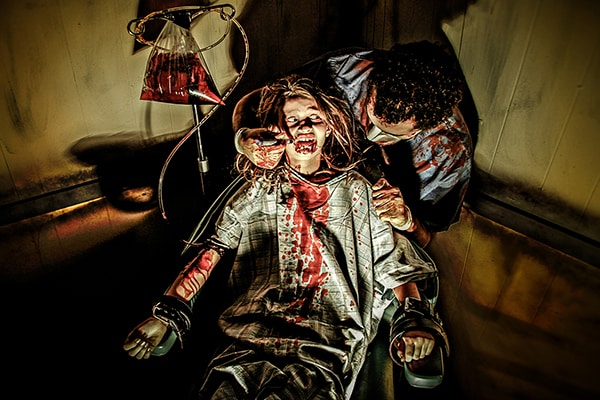
The Popularity of Halloween and Horror Is Growing
The next optimistic sign is the growth of Halloween and horror broadly. According to multiple sources, 2017 was the biggest year for horror movies in terms of money spent. It was fueled on the back of It and Get Out. Horror movies alone did $733 million that year, which means horror movies sold way more tickets than the haunted attraction industry did. That’s something to think about. 2018 was also a solid year with some really popular horror films, and 2019 is expected to easily beat 2017 because it has It, Chapter 2, and Us, another Jordan Peele movie. It’s shaping up to be a good one for horror.
Horror movies and interest in horror have grown steadily over the decades. However, interestingly enough, 2017 wasn’t the biggest if you account for inflation. The Exorcist in 1973 was actually bigger. Even accounting for inflation, there was the fucking phenomenon that was The Exorcist at the time. I don’t think we’re going to replicate that anytime soon, guys.
Halloween as a holiday has been growing steadily, too. Currently, 90% of households with children participate in Halloween, according to America Haunts, which highlights the need for haunted attractions to focus on families. You can get that family money—four or six tickets sold rather than two. Also, I think families should get a discount—not a group discount, but a discount.
The National Retail Foundation has Halloween generating between $5 billion and $7 billion per year, of which the haunted attraction industry is about 8% to 9%. So, as Halloween and horror grow, so do we. We tend to maintain that same slice, from what I can tell, so, if the pie gets bigger, we get a bigger slice of pie. I didn’t look much deeper into it than what the National Retail Foundation said, but I tend to trust somebody called the National Retail Foundation.
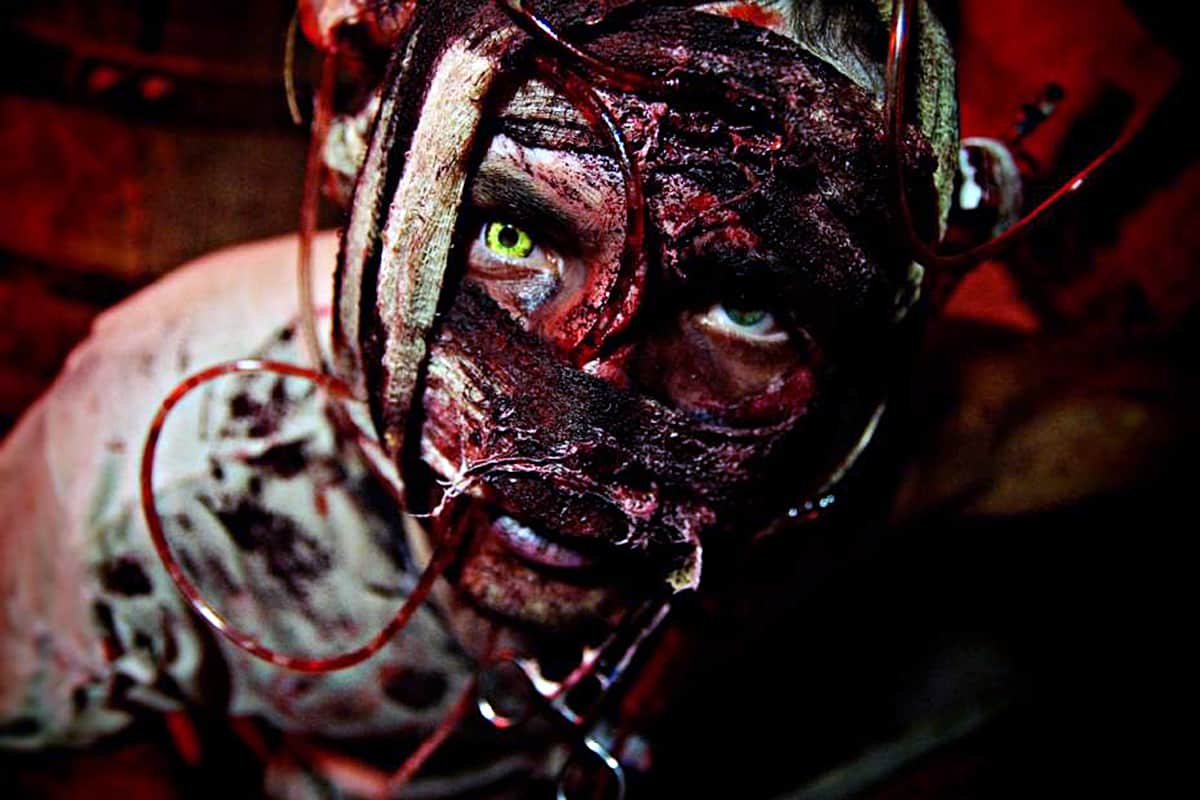
Racial Demographics Are Improving
The fifth item on my list is improving racial demographics. Last time, we talked about the terrifying age demographics and what’s coming. Basically, people are living longer and they’re having fewer kids. This means we expect there to be a bunch of people who are zero years old and they tragically die, leaving a triangle with all the young people at the bottom, right? The future is anticipated to be more of a straight line up and down. That’s kind of terrifying for an industry that thrives on the 13-29 range.
However, while the age demographics look fairly tragic, there’s definitely room for expansion in the improving racial demographics. Halloween and horror—in particular, haunted houses—have traditionally been an experience for white people, just to be blunt about it. I know, two cisgender white people talking about diversity is—what’s the word I’m looking for here? Help me out.
“We’re not the people to speak to it. That’s why we haven’t done an episode on this yet, because we’re waiting to find the right person,” explained Crystal.
Though we’ve always been a diverse industry in other ways, people of color have rarely been involved, in general. They’ve been underrepresented, and I don’t think there’s much doubt about that. Just go to HAuNTcon. However, the demographics are shifting. We owe a lot to Jordan Peele of Get Out, but we also have Purge, which was the first, black-led horror movie. There’s also A History of Black Horror, which is a documentary about black horror. The trend of people of color being featured in horror is getting stronger. That bodes well for us, demographically, as this is a new group we can reach out to and try to make a driving force for our bottom line.
“If you do that, make sure you don’t make them all Voodoo Priests and Priestesses,” recommended Crystal.
Some of us have got a lot to learn. I’m going to leave it there. It remains to be seen how long this push is going to continue, but one thing I’m hoping for is the young, diverse audience that’s going to these horror movies will grow up to become paying, diverse, haunt fans later in life.
“Or haunters themselves.”
Or haunters themselves. This is our opportunity now, today, to start appealing to our more diverse audience and having an expectation it will show up.
The Growing Desire for Non-screen Experiences
Let’s move on to number six, which is the growing desire for non-screen experiences. In the previous episode, we made the point about how we’re facing increased competition from escape rooms, ax throwing, all of these visceral, hands-on, in person, cellphone-free experiences. That could be a bad thing, but it could also be a positive thing. That’s the flip side of the coin of competition. Increased competition means there’s an increased market, which means more potential customers. There’s a real desire in this digital, cellphone, screentime age for visceral, real-world experiences. People want to touch things, smell things, experience things in person that they can’t on a screen. Movies and music are things you can get on your phone, on your laptop, and on your TV, but you can’t get a haunted attraction on your laptop. They’re hungry for real experiences.
There’s growing evidence that young people are seeking value experiences—something very cheap. You know, pinch those pennies, save that money. A lot of that is the economy they came up in, so we can’t blame them. But, they’re also more than willing to spend lots of money for very special experiences. They’re willing to pay a premium if something justifies it. We’re living in the culture of FOMO–fear of missing out. Basically, a unique, limited, visceral experience that can only be seen at a certain time of year by going to a certain place and doing a certain type of thing is very much in demand. This also means we need to keep things fresh.
Here’s a good example. We went to the Christmas thing in New Orleans Nightmare House. We asked a couple people in line what brought them there. They replied that they couldn’t do this any other time of year, and it seemed like an experience. So, there you go.
“If you do those types of holidays that are only one- or two-day runs, you’re going to get more interest,” said Crystal.
The age of FOMO is real, man.
We made the decision not to go to the Valentine’s Day event at New Orleans Nightmare House, because the Christmas one didn’t feel unique or complete enough to justify going back. However, even making that conscious decision based upon very good points, I still have a little FOMO.
There Are More Haunts Than Ever
The next reason for optimism that I found was there are more haunts than ever. According to Haunt World, there are currently 1,200 commercial haunts, 3,000 charitable ones, and 300 haunts in amusement parks in the United States.
“Not to mention all the home haunters,” said Crystal.
I don’t know what they consider a charitable haunt. That’s a bit of a fuzzy term to me. We could be considered a charity haunt because we accept donations and we turn no profit at all. We typically receive about $500 in donations and spend $1,000 to $1,500, easy.
There are more haunts today than at any point in history, as far as we can determine, and there’s no clear sign of a downturn. The thing is, there’s a lot of turnover in the haunt industry, but there’s turnover in any industry that has a lot of small businesses. In any industry, most small businesses close within four years. That’s just as true in the haunted attraction industry, so it’s not necessarily a problem with the industry. The fact that more haunts are opening than closing is a positive sign. By all accounts, we have the largest headcount ever in our industry and, mind you, this is somewhat outdated data. I think they’re pulling from 2017 or 2016.
Consistent, Year-to-Year Financial Growth
The final item on my list is consistent, year-to-year financial growth in the haunt industry. Here’s one of the areas where my research went off the rails. Numbers are almost impossible to find. There are several haunted attraction organizations that seem like they’d know, because they have the context for the industry, they get the details, and they get the information, but they don’t publish this data. The only data I was able to find was about the size of the industry, which I talked about in the last episode, for 2016 or 2017. There’s nothing farther back than that. However, having spoken with some of those industry organizations and with haunters that run smaller organizations, we can say there’s been year-to-year growth. Some of this is due to more haunts and therefore a higher headcount and more money, but we also talked about rising ticket prices in the last episode. The growth isn’t simply due to rising attendance.
That being said, haunted attractions are still being seen as a good value, and this is something that blew my mind. There were studies conducted by America Haunts and others that pointed to haunt attendees still feeling haunted attractions are good values. Some of this is because a lot of that extra money is going back into the haunt to provide improved experiences, new effects, new sets, and so on, which is how it should be. As these haunts improve, they’re able to charge more.
I do think there’s going to be a ceiling on this, and we’re already seeing memes about it from non-haunty people such as, “$100 for a haunt ticket? I’m better off dead,” or something like that. When I saw those memes last year, I got worried and antsy, but it looks like those are anecdotes not data. The best data I can find is that people still view haunted attractions as a good deal. Hopefully, that will continue.
I believe concentration in the industry is still an issue, in terms of a couple of companies owning so many haunts and also in terms of this upward momentum toward these mega-haunts. But it still seems like revenue is growing, and there are more haunts across the country than ever before. I can find no signs from any organization that indicate anything other than growth in 2019 and 2020. 2019 looks good, in large part because we’re going to see IT, Chapter 2, which is coming out in early September, I think. That will provide a boost for the industry and, of course, every goddamn Pennywise prop on the planet will be brought out. I just get so bored with all the Pennywise, because we’ve seen them all. It’s at every haunt we go to.
In terms of props, I prefer the medium-budget haunts. Not the smallest of the small, but the medium-size ones that can’t afford $5,000 for an animatronic Pennywise but can buy a couple of really good, hundred-dollar zombies and use them well. That, to me, is magical.
So, that wraps up this blog on the main reasons we have to be optimistic about the haunted attraction industry moving forward. I went into this topic very bullish and optimistic about the future of the haunt industry, but, after struggling to do the research, I’m a little more tempered. I thought the episode on the challenges in the haunt industry would be the one that would have depressed me and made me say, “Oh no, we’re doomed!” However, the best signs for the industry are the growth in Halloween overall, which is currently the second most popular retail holiday. We’re never going to beat Christmas—just give that one up—but Halloween is growing, and interest is expanding. If we can continue to exploit that and also take advantage of the fact that a larger demographic base is taking interest in this, we have a lot of potential to bring in new customers, new actors, new owners, new people, and expand—both in terms of the people in the industry and the people who pay the industry money. I see a lot of opportunity here. I’m curious to see how the industry exploits it.
